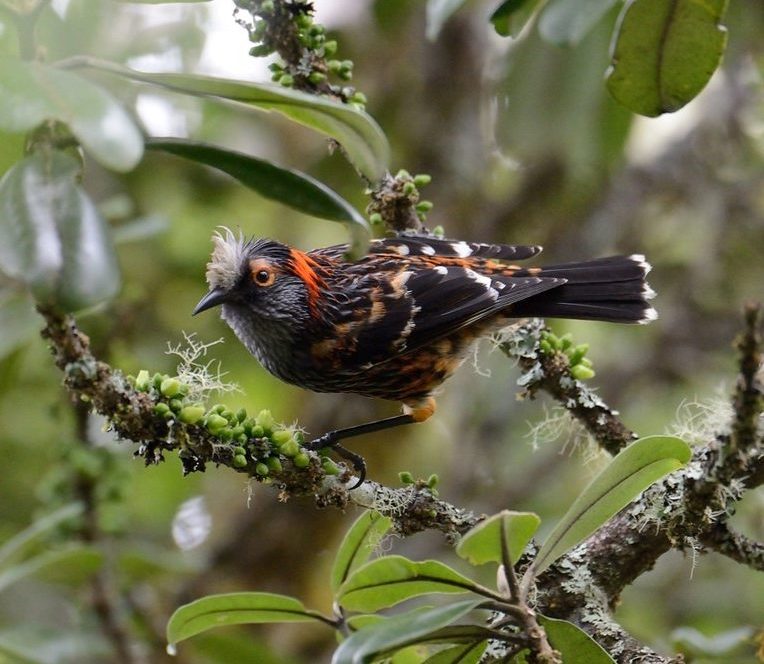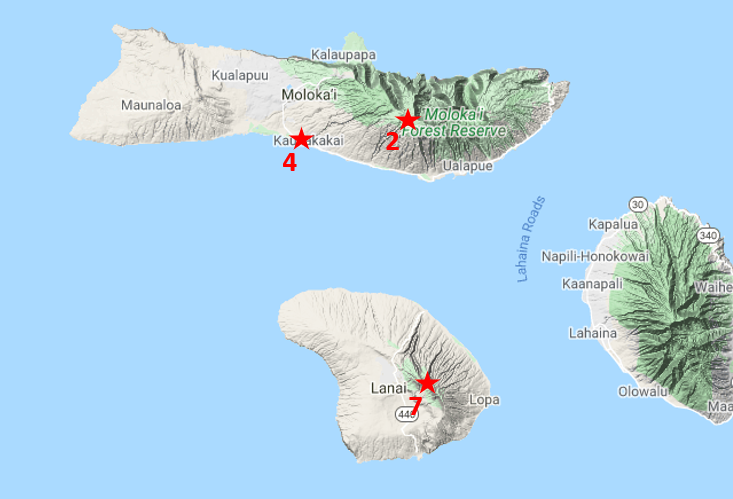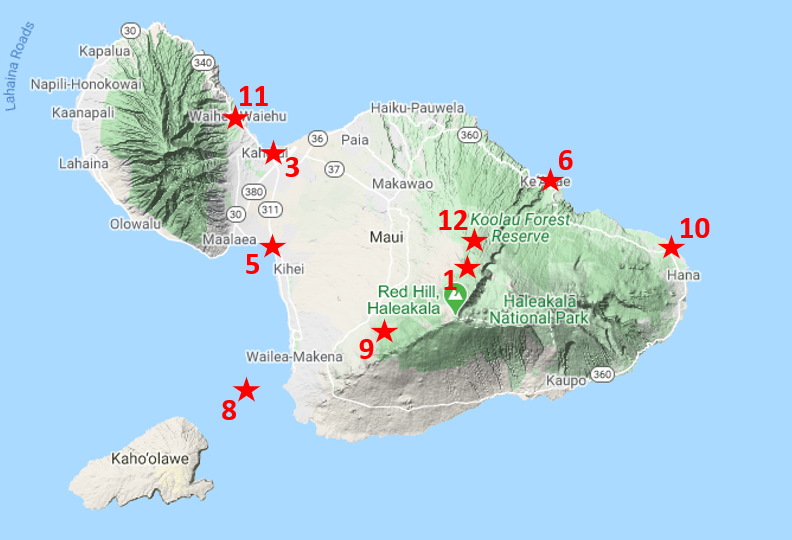The Avitourist’s Guide to Maui Nui

The Maui endemic Akohekohe, formerly known as the Crested Honeycreeper. © Jim Denny
Maui Nui is an archipelago of four islands—Maui, Molokai, Lanai, and Kaho’olawe—which would be logistically challenging to explore fully in a single trip. For birds, however, Hawaii’s extinction bottleneck has greatly reduced the possibilities and the complexity of realizing them. The three Maui Nui endemics known to have survived into the 2020s are all confined to Maui: the Maui Alauahio, the Akohekohe, and the Maui Parrotbill. They can be found together at one site, the Waikamoi Preserve—but note that visits must be arranged well in advance. There is no other publicly accessible site where either the parrotbill or the Akohekohe is found regularly.
As recently as the 1900s, both Lanai and Molokai supported their own endemic bird species. Lanai’s disappeared sooner, the Maui Nui Akialoa around 1900 (possibly as late as the 1920s or ‘30s), the Lanai Hookbill around 1920, and the Oloma’o around 1930. Molokai fared slightly better, losing the Black Mamo around 1910, the Kakawahie in the 1960s, and the Oloma’o around 1990.
Endemic Birds of Maui Nui

The endemic Maui Parrotbill is Maui’s rarest and most endangered bird. © Michael Walther
Three more endemic honeycreepers are thought to have gone extinct recently on Maui itself: the Maui Akepa was last reported in 1988, the Maui Nukupu’u in 1995 or ‘98, and the Po’o-uli in 2004. Both the akepa and the nukupu’u may have gone extinct several decades earlier, as none of the modern records is incontrovertibly substantiated. To this depressing litany we can add a honeyeater, the Bishop’s O’o, which was last reported on Maui in 1981 and on Molokai around 1900. It is conceivable that one or more of the nine endemics that are thought to be extinct could still persist undetected, waiting to be rediscovered, but that seems extremely unlikely considering the quantities of effort that have been dedicated to searching for them.
Maui Nui – Orientation Map


Apart from its three endemic honeycreepers, Maui has a handful of other ornithological highlights—though to be candid it has fewer than either the Big Island, Kauai, or even Oahu.
Highlands
Waikamoi Preserve (Site #12), Haleakala National Park (Site #1), and Polipoli Spring (Site #9) are home to three additional honeycreepers: Apapane (on all major islands), I’iwi (also on Kauai and the Big Island), and Common Amakihi (also on the Big Island).
The upper elevations of Haleakala also support Hawaiian Goose and “Hawaiian Short-eared Owl”. Haleakala Crater supports the second-largest breeding colony of Hawaiian Petrel, although these birds are mainly nocturnal and difficult to see (but easy to hear at night).
Wetlands
Two more Hawaiian endemics can be found at Kealia Pond National Wildlife Refuge (Site #5), Kanaha Pond (Site #3), and on Molokai at Kaunakakai (Site #4): Hawaiian Coot and “Hawaiian Stilt” (a distinct form that may be either a subspecies of Black-necked Stilt or a separate species), as well as various other wetland birds.
Seabirds
Oceanic birds can be seen at a few prominent coastal headlands, mainly along the Hana Highway at Ke’anae (Site #6) and Wai’anapanapa State Park (Site #10). Among the seabirds that can often be seen at such points along Maui’s coasts, the ones likely to be of greatest interest to visitors are: Wedge-tailed Shearwater, Yellow-billed Tropicbird, Great Frigatebird, Brown Booby, Red-footed Booby, and “Hawaiian Noddy” (a distinct form of Black Noddy that seems likely to be recognized as a separate species).
Day trips to Molokini Islet (Site #8) offer some of the same species, along with the possibility of Bulwer’s Petrel, which nests there and can sometimes be seen returning to the islet around dusk.
Exotics
Like the other major islands, Maui has its share of exotic (i.e., non-native) species, including two or three that are not established on the other islands (Mitred Parakeet, Orange-cheeked Waxbill, and possibly Golden Pheasant) and a few that can be found more easily on Maui than on some of the other islands (Chukar, Black Francolin, Gray Francolin, Rosy-faced Lovebird, Chinese Hwamei, and Chestnut Munia).